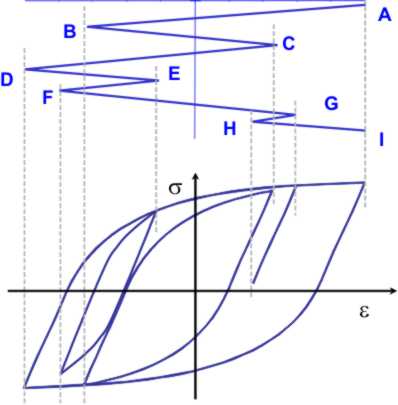
eFatigue gives you everything you need to perform state-of-the-art fatigue analysis over the web. Click here to learn more about eFatigue.
Rainflow Counting Technical Background
Rainflow counting is a process to obtain equivalent constant amplitude cycles. Its name comes from the original description from the Japanese researchers Matsuiski and Endo where they describe the process in terms of rain falling off a pagoda style roof. A more insightful description based on cyclic plasticity is usually used to explain the method.

In the figure above a simple loading history ( points A - I ) is plotted vertically so that it resembles a Japanese pagoda. The resulting deformation, stresses and strains, is plotted directly below the loading history. In the lower part of the figure, four cycles are easily identified. One large overall cycle, one intermediate cycle in the center of the plot, and two smaller cycles. Each cycle has its own strain range and mean stress. From a deformation viewpoint the process proceeds as follows. Start at A, the maximum strain, and unload the material to B. Then reload to point C and unload to D. When the material reaches the strain at point B during the unloading from C to D the material remembers its prior deformation and deforms along a path from A to D as if the event C-D never happened. This is better illustrated in the next part of the loading. Load from D to E and unload to F. Now load from F to G. When the material reaches the strain at point E during the loading from F to G the material remembers its prior deformation and deforms along a path from D to G as if the event E-F never happened. The same process occurs for G-H.
Rainflow counting will identify four cycles, A-D-I, B-C-B, E-F-E and G-H-G. Rainflow counting identifies the major load excursions, for example D to I, and treats subcycles like E-F and G-H as interruptions to the overall loading event D-I
 日本語
日本語